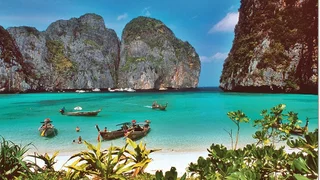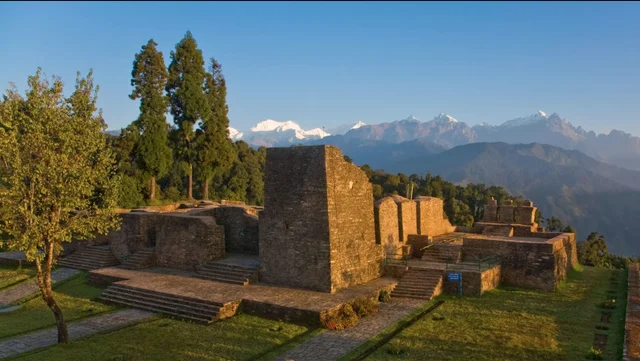
Beyond the Taj, 7 wonders of India to visit in 2023
Far beyond India’s greatest hits like the Taj Mahal, the palaces of Rajasthan, the carvings and sculptures at Ajanta & Ellora, and the forts and temples of Tamil Nadu and Karnataka, are lesser-known structures that have stood the test of time away from the limelight. These walls have seen dynasties rise and fall and often inspired Indian architecture for decades to come. Nuggets of Indian history lie in its ruins, meticulous inscriptions, thoughtful design and scratched surfaces. Here are seven wonders of India you must visit in 2023.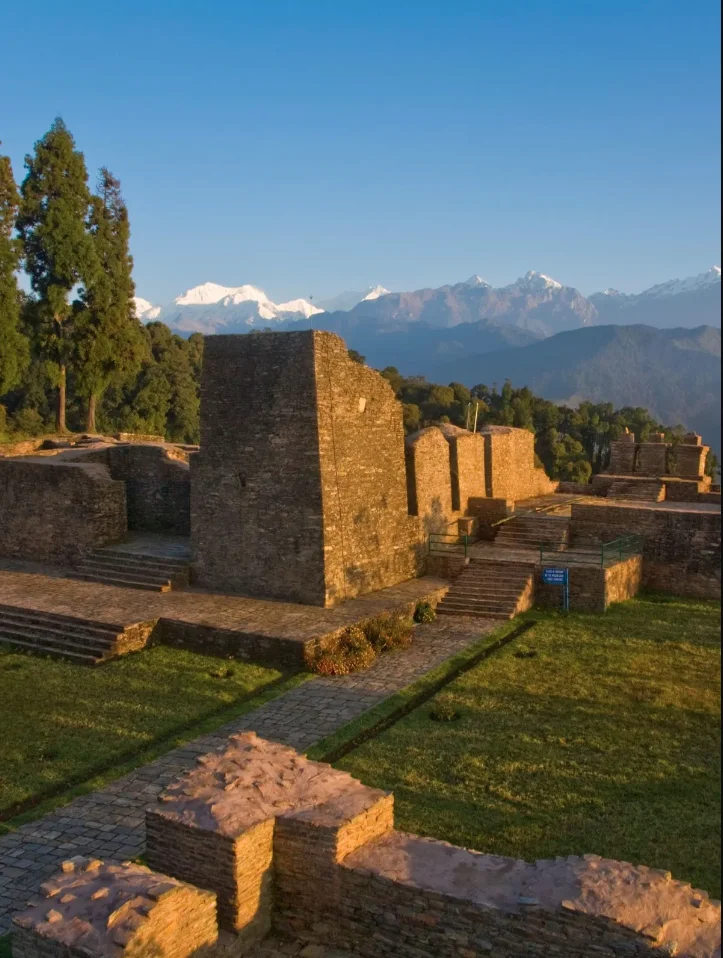 💥Rabdentse Ruins, Sikkim: A fallen royal capital
💥Rabdentse Ruins, Sikkim: A fallen royal capital
Often known as the Machu Picchu of India, the ruins of Rabdentse date back to the 1670s and offer a glimpse into the royal past of Sikkim. Rabdentse was once the second capital of the kingdom of Sikkim. Tensung Namgyal, the son of Phunstog Namgyal, and the first Chogyal of Sikkim shifted the capital here from Yuksom. In the 18th century, the city was destroyed by the invading Gurkha army. Years later, the Archaeological Survey of India (ASI) restored the site, adding to it landscaped gardens and pathways. The ruins are close to the town of Pelling and a 2km hike from Pemayangtse Monastery, which is an important part of the Buddhist pilgrimage circuit. Inside, there are Buddhist shrines, a throne and an open quadrangle. The most striking feature, however, is a 7-ft long white marble slab, which remains the main draw for locals and tourists even today. The location of the slab is believed to have been the location of a monastery called Risum Gompa. Getting there: Rabdentse ruins are a 30-min drive from Pelling and a short hike from Pemayangtse Monastery.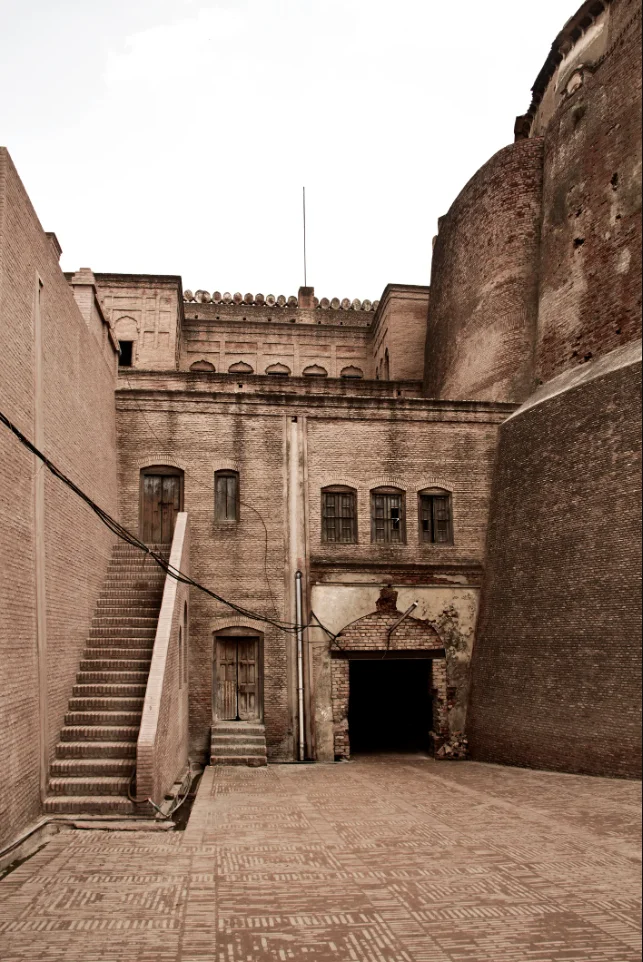 💥Qila Mubarak, Punjab: India’s oldest surviving fort
Razia Sultan, the first and only female ruler of the Delhi Sultanate, was revolutionary in more ways than one. When she became the Empress in 1236, she refused to be called ‘Sultana’, the term used to refer to the mistress or wife of an Emperor. Instead, she insisted on being called Sultan, ordered coins to be minted in her name and led her army to battles. Unfortunately, there’s little archaeological evidence of Razia Sultan’s life. Qila Mubarak in Bathinda is the only living monument that confirms her legends. Though it was built between 90-110 CE by Raja Dab of the Kushana dynasty, it is best-known for its connection to the Empress. The fort is a record of a tumultuous time in the Empress’ life, when she was imprisoned by the then governor of Bathinda Malik Altunia, who was intent on winning her over by any means necessary. Razia Sultan eventually agreed, but soon after, the couple was assassinated on their way back to Delhi. By some accounts, the structure is the oldest surviving fort in India, and there’s even a gurdwara dedicated to Guru Gobind Singh inside that dates back to 1835. Getting there: Qila Mubarak is a 5-min drive from Bathinda Junction
💥Qila Mubarak, Punjab: India’s oldest surviving fort
Razia Sultan, the first and only female ruler of the Delhi Sultanate, was revolutionary in more ways than one. When she became the Empress in 1236, she refused to be called ‘Sultana’, the term used to refer to the mistress or wife of an Emperor. Instead, she insisted on being called Sultan, ordered coins to be minted in her name and led her army to battles. Unfortunately, there’s little archaeological evidence of Razia Sultan’s life. Qila Mubarak in Bathinda is the only living monument that confirms her legends. Though it was built between 90-110 CE by Raja Dab of the Kushana dynasty, it is best-known for its connection to the Empress. The fort is a record of a tumultuous time in the Empress’ life, when she was imprisoned by the then governor of Bathinda Malik Altunia, who was intent on winning her over by any means necessary. Razia Sultan eventually agreed, but soon after, the couple was assassinated on their way back to Delhi. By some accounts, the structure is the oldest surviving fort in India, and there’s even a gurdwara dedicated to Guru Gobind Singh inside that dates back to 1835. Getting there: Qila Mubarak is a 5-min drive from Bathinda Junction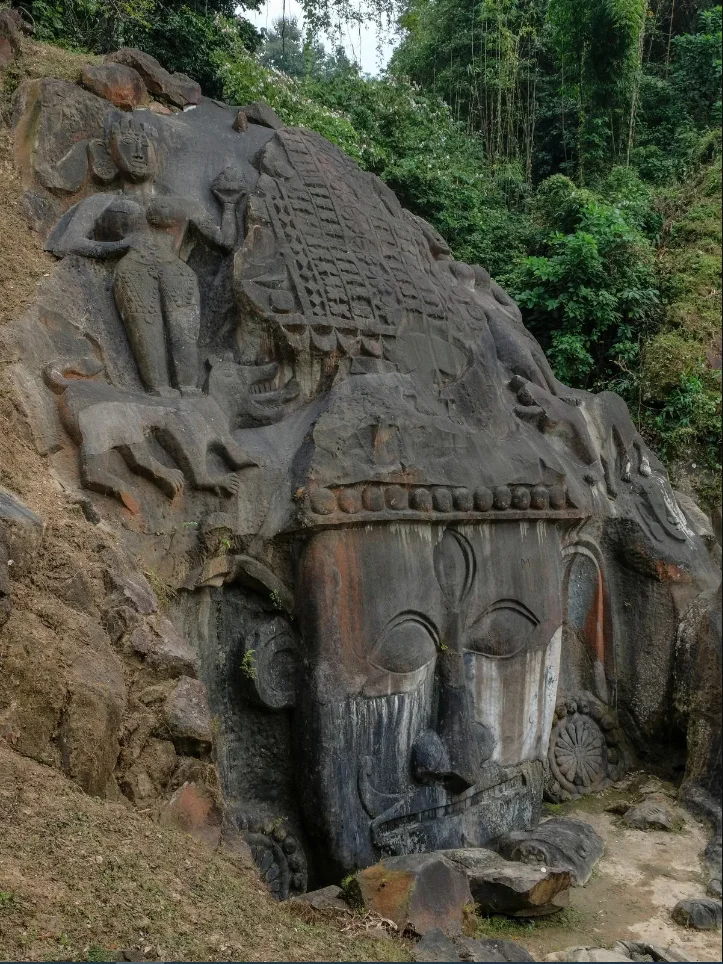 💥Unakoti, Tripura: Rock art with mysterious origins
According to the myths around the rock carvings of Unakoti, Lord Shiva once spent a night at the site on a trip to Kashi along with 99,99,999 gods and goddesses. His companions and he were to awaken before dawn to continue the pilgrimage. But when the time came, only Shiva awoke. Furious, he turned them all to stone. Another legend states that the carvings were made by an artisan named Kallu Kumhar, who accompanied Lord Shiva and Parvati on their journey to Mount Kailash. Kumhar was ordered to create one crore carvings depicting the lord and his companions in one night. He managed to create almost all of them. Unakoti literally translates to “one less than a crore”. A handful of fascinating rock carvings remain at the site, the most striking among them being a 30ft carving of Shiva himself. There’s also a carving of Ganesha, Goddess Durga on a lion, Goddess Ganga, Hanuman, Ravana and more. Getting there: Unakoti district is a 4-hour drive from Agartala
💥Unakoti, Tripura: Rock art with mysterious origins
According to the myths around the rock carvings of Unakoti, Lord Shiva once spent a night at the site on a trip to Kashi along with 99,99,999 gods and goddesses. His companions and he were to awaken before dawn to continue the pilgrimage. But when the time came, only Shiva awoke. Furious, he turned them all to stone. Another legend states that the carvings were made by an artisan named Kallu Kumhar, who accompanied Lord Shiva and Parvati on their journey to Mount Kailash. Kumhar was ordered to create one crore carvings depicting the lord and his companions in one night. He managed to create almost all of them. Unakoti literally translates to “one less than a crore”. A handful of fascinating rock carvings remain at the site, the most striking among them being a 30ft carving of Shiva himself. There’s also a carving of Ganesha, Goddess Durga on a lion, Goddess Ganga, Hanuman, Ravana and more. Getting there: Unakoti district is a 4-hour drive from Agartala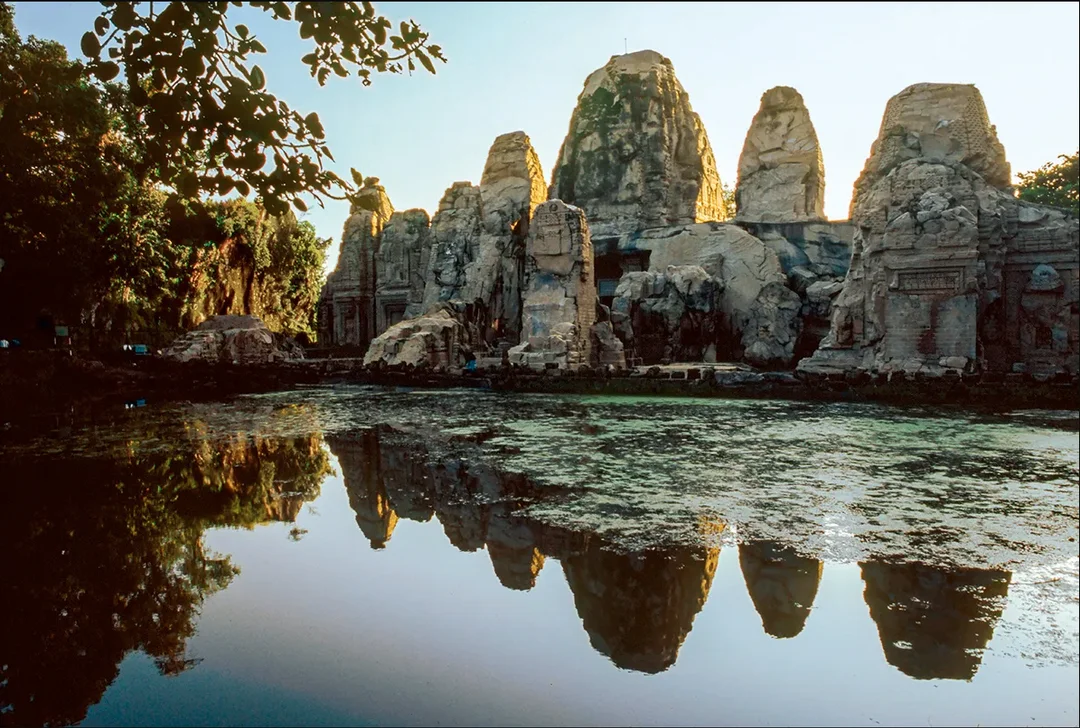 💥Masrur Temples, Himachal Pradesh: The Pandavas’ stairway to heaven
This complex of rock-cut Hindu temples dates back to the 8th century and is believed to be carved out of a monolithic rock. The complex is built in a symmetrical manner on a square grid, with the main temple in the centre and the smaller temples around it. Archaeological evidence suggests that the complex was meant to be far bigger, but much of it was left incomplete. Little is known about the history of the site and its architects. Legend has it that the Pandavas spent a part of their exile at the site and tried to build a stairway to heaven while they were there. If you visit, look out for an incomplete stairway that remains at the site. Getting there: The Masrur Temples are an hour’s drive away from Kangra Airport.
💥Masrur Temples, Himachal Pradesh: The Pandavas’ stairway to heaven
This complex of rock-cut Hindu temples dates back to the 8th century and is believed to be carved out of a monolithic rock. The complex is built in a symmetrical manner on a square grid, with the main temple in the centre and the smaller temples around it. Archaeological evidence suggests that the complex was meant to be far bigger, but much of it was left incomplete. Little is known about the history of the site and its architects. Legend has it that the Pandavas spent a part of their exile at the site and tried to build a stairway to heaven while they were there. If you visit, look out for an incomplete stairway that remains at the site. Getting there: The Masrur Temples are an hour’s drive away from Kangra Airport.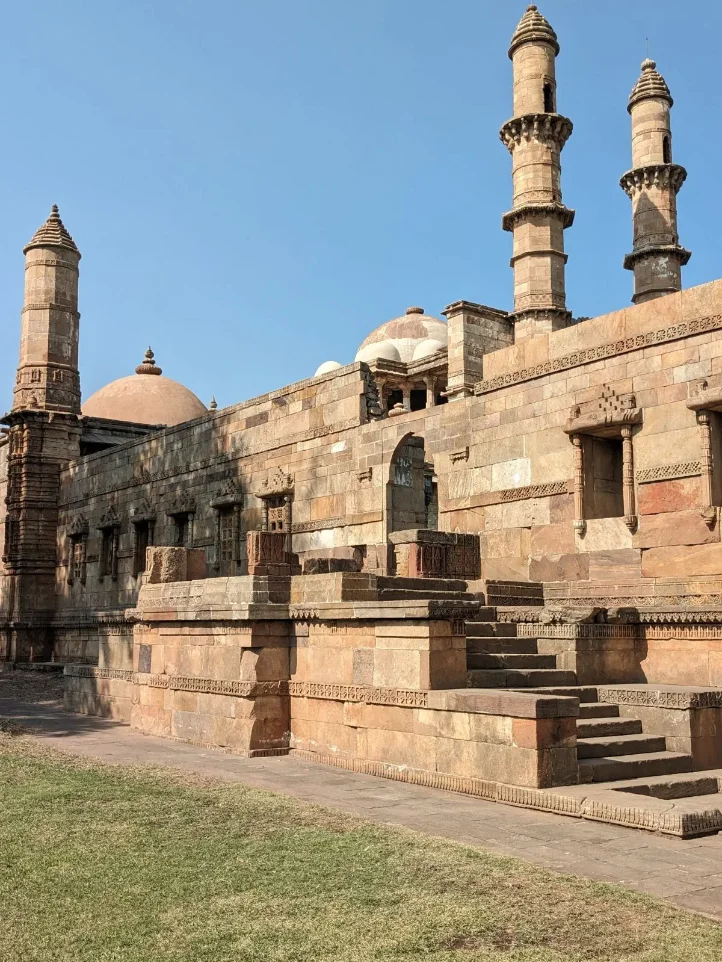 💥Champaner-Pavagadh Archaeological Park: Remains of a pre-Mughal city
Palaces, temples, mosques, tombs, ruins of residential complexes, stepwells and more are scattered throughout this 3,280-acre UNESCO World Heritage Site that extends from Pavagadh hill to the city of Champaner. In the early 14th century, the area was a Hindu capital under the Khichi Chauhan Rajputs, following which Turkish ruler Sultan Mehmud Begda conquered the hill fortress. Its history reflects in its structures, which represent a perfect blend of Hindu-Muslim architecture. The Jama Masjid on the site even became a model for later mosque architecture in India. The Kalikamata Temple atop Pavagadh Hill continues to draw pilgrims every year and the site is the only complete and unchanged Islamic pre-Mughal city. Getting there: The park is an hour’s drive from Vadodara
💥Champaner-Pavagadh Archaeological Park: Remains of a pre-Mughal city
Palaces, temples, mosques, tombs, ruins of residential complexes, stepwells and more are scattered throughout this 3,280-acre UNESCO World Heritage Site that extends from Pavagadh hill to the city of Champaner. In the early 14th century, the area was a Hindu capital under the Khichi Chauhan Rajputs, following which Turkish ruler Sultan Mehmud Begda conquered the hill fortress. Its history reflects in its structures, which represent a perfect blend of Hindu-Muslim architecture. The Jama Masjid on the site even became a model for later mosque architecture in India. The Kalikamata Temple atop Pavagadh Hill continues to draw pilgrims every year and the site is the only complete and unchanged Islamic pre-Mughal city. Getting there: The park is an hour’s drive from Vadodara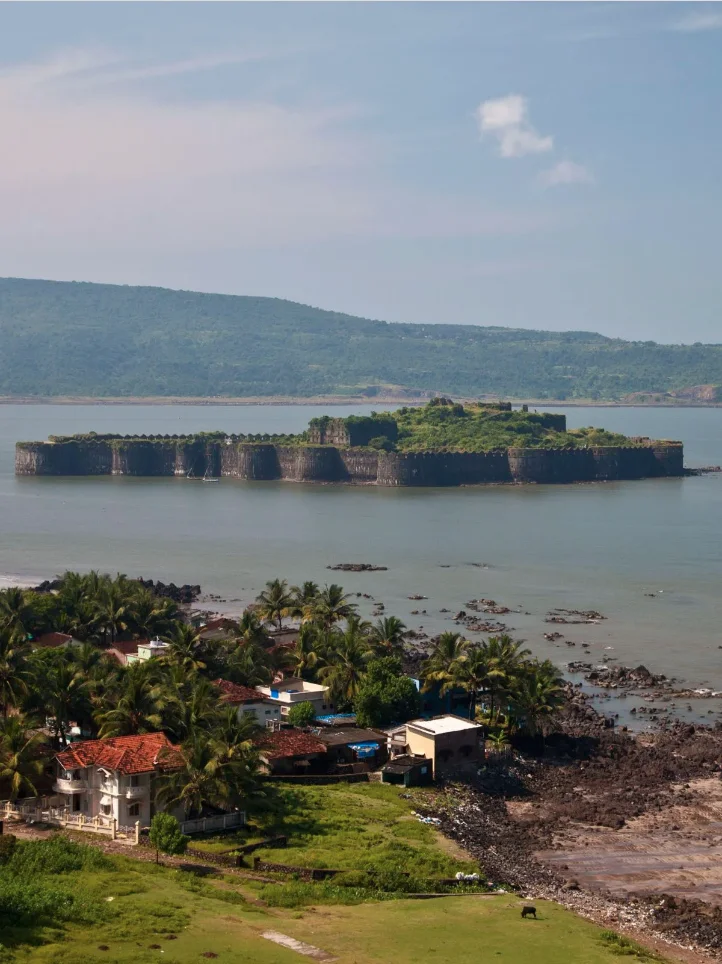 💥Murud Janjira Fort: A citadel rising from the sea
It is believed that when the Kallal Bangdi—the largest of the three surviving canons at Janjira Fort—boomed, the entire fort reverberated for a week under its force. Today, the fort, built in the middle of the sea, is easily accessible via boats that take enthusiastic tourists to its mighty walls, but there was a time when Janjira fort was considered impregnable. The fort was known to have large granaries and freshwater wells to feed the 550 families that resided inside. The Siddis are credited as the architects of the sea fort—a stone citadel with towers, turrets and mounted cannons to scare away any trespassers. The fort is just a few hours from Mumbai and Pune, easy enough for a day trip today. Getting there: Boats ply between Rajapuri jetty at Murud beach and Murud Janjira Fort from 7am to 4.45pm.
💥Murud Janjira Fort: A citadel rising from the sea
It is believed that when the Kallal Bangdi—the largest of the three surviving canons at Janjira Fort—boomed, the entire fort reverberated for a week under its force. Today, the fort, built in the middle of the sea, is easily accessible via boats that take enthusiastic tourists to its mighty walls, but there was a time when Janjira fort was considered impregnable. The fort was known to have large granaries and freshwater wells to feed the 550 families that resided inside. The Siddis are credited as the architects of the sea fort—a stone citadel with towers, turrets and mounted cannons to scare away any trespassers. The fort is just a few hours from Mumbai and Pune, easy enough for a day trip today. Getting there: Boats ply between Rajapuri jetty at Murud beach and Murud Janjira Fort from 7am to 4.45pm.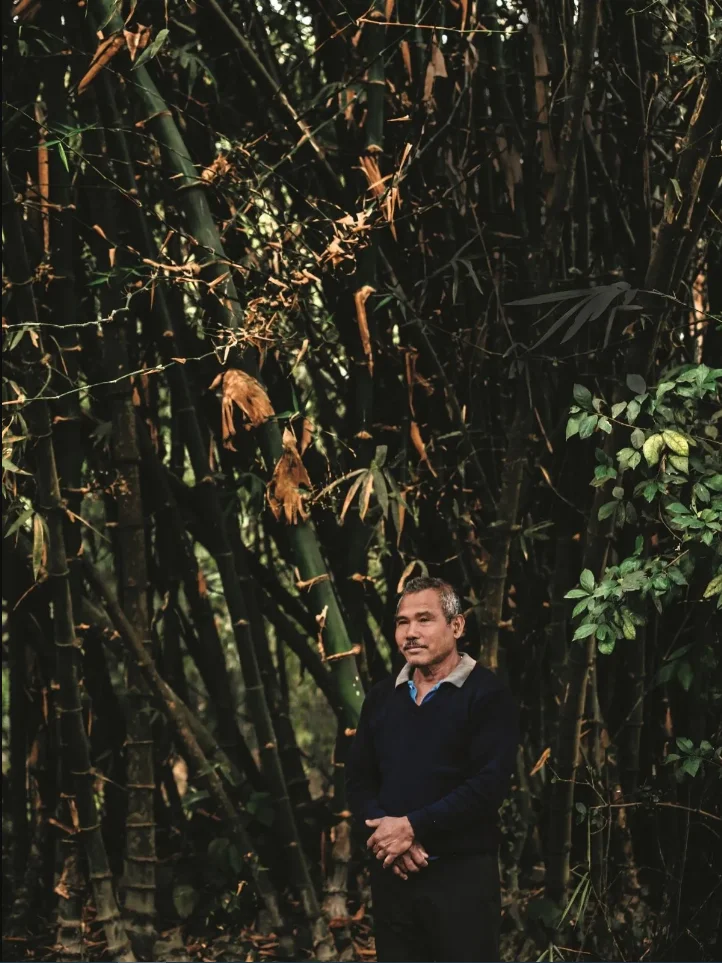 💥Molai forest: India's man-made forest
Most people may never have heard of the river island of Majuli in Assam if it wasn't for Jadav Payeng, the Forest Man of India. Payeng, who lives close to the sandbar of the Brahmaputra river in Majuli, was 16 when he began planting a forest in the region. On his way back from school one day, he found several dead snakes on the banks. Deforestation and a barren sandbank had left the reptiles completely helpless. Payeng spent the next 50-odd years of his life diligently planting a forest to prevent further damage to the delicate ecosystem around him. Today, the thriving forest spans 550 hectares and is home to elephants, monkeys, tigers, deer and birds. His forest was recognised by the forest department in 2008 and named Molai Forest after his childhood nickname 'Mola'. Getting there: Molai forest is a 30-min boat ride from Jorhat.
Cre: cntraveller
💥Molai forest: India's man-made forest
Most people may never have heard of the river island of Majuli in Assam if it wasn't for Jadav Payeng, the Forest Man of India. Payeng, who lives close to the sandbar of the Brahmaputra river in Majuli, was 16 when he began planting a forest in the region. On his way back from school one day, he found several dead snakes on the banks. Deforestation and a barren sandbank had left the reptiles completely helpless. Payeng spent the next 50-odd years of his life diligently planting a forest to prevent further damage to the delicate ecosystem around him. Today, the thriving forest spans 550 hectares and is home to elephants, monkeys, tigers, deer and birds. His forest was recognised by the forest department in 2008 and named Molai Forest after his childhood nickname 'Mola'. Getting there: Molai forest is a 30-min boat ride from Jorhat.
Cre: cntraveller

Often known as the Machu Picchu of India, the ruins of Rabdentse date back to the 1670s and offer a glimpse into the royal past of Sikkim. Rabdentse was once the second capital of the kingdom of Sikkim. Tensung Namgyal, the son of Phunstog Namgyal, and the first Chogyal of Sikkim shifted the capital here from Yuksom. In the 18th century, the city was destroyed by the invading Gurkha army. Years later, the Archaeological Survey of India (ASI) restored the site, adding to it landscaped gardens and pathways. The ruins are close to the town of Pelling and a 2km hike from Pemayangtse Monastery, which is an important part of the Buddhist pilgrimage circuit. Inside, there are Buddhist shrines, a throne and an open quadrangle. The most striking feature, however, is a 7-ft long white marble slab, which remains the main draw for locals and tourists even today. The location of the slab is believed to have been the location of a monastery called Risum Gompa. Getting there: Rabdentse ruins are a 30-min drive from Pelling and a short hike from Pemayangtse Monastery.






79
83
1
0


